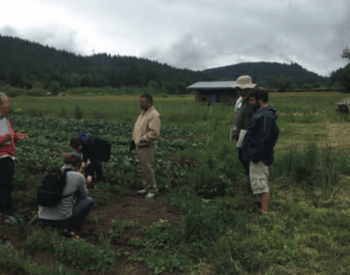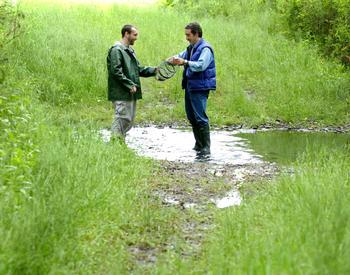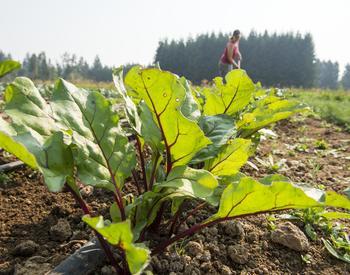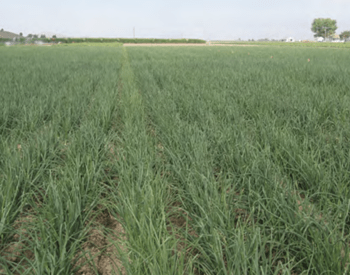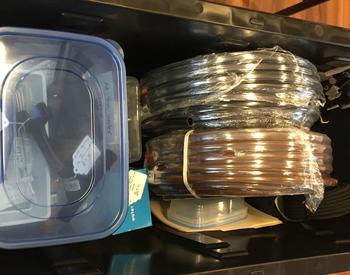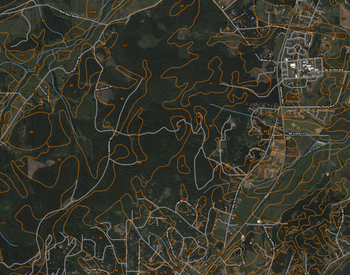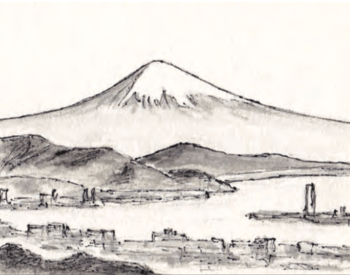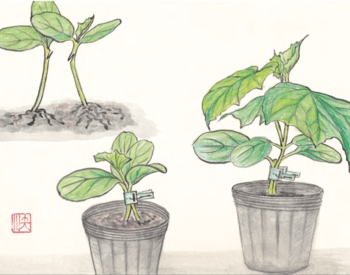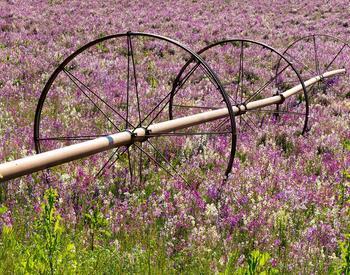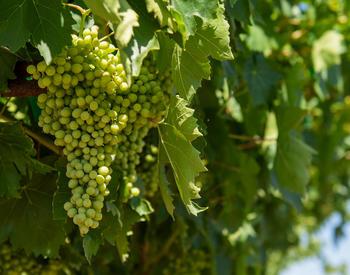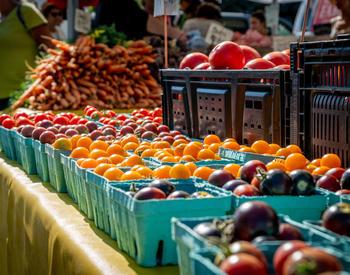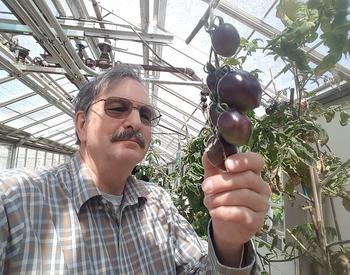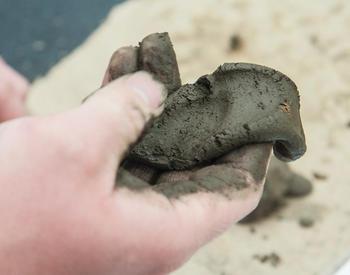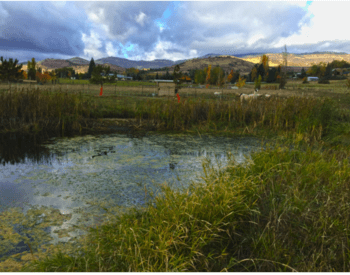Commercial and non-commercial producers in the Pacific Northwest are already facing challenges of increasing weather variability and a changing climate. Reduced snowmelt, higher temperatures and drought directly impact water supply for growers.
While farmers can do little on their own to prevent climate change, they may be able to change irrigation practices, select more drought-tolerant crops to grow, and use water conservation techniques to mitigate crop losses caused by extreme climate events. Dry farming is one approach to producing food without irrigation.
Case study of a dry farmer with more than 40 years of experience
One farmer has grown tomatoes, potatoes, winter squash, garlic, favas and other beans organically and without any form of irrigation for 40 years (1974 to 2014). He started off in California and then retired in 2007 and bought 9.6 acres in Veneta, Oregon with no water rights, where he is now growing food for himself and selling to multiple small grocers in Eugene. As one of the most experienced dry farmers in our region, here are some common misconceptions and key points about dry farming from his experience.
Common soil, water and location misconceptions about dry farming
Dry farming is watering a few times in the beginning of the season and then cutting it off towards the end.
- Watering is not complementary to dry farming.
- Watering can create crusting and cracking in the soil surface and cause soil to dry out faster.
Dry farming just means farming without irrigation.
- Soil preparation, timing of tillage and planting, conservation of moisture, tilth, and plant spacing are all key points to dry farming.
- If the soil is worked too late and is too dry at planting time dry farming will not work.
- The soil must be worked at just the right time by paying close attention and monitoring soil moisture.
Dry farming only works in cool coastal climates.
- Dry farming also works in hotter climates inland.
- Dry farming is more common in California where there is less rainfall than in Oregon and temperatures get well above 100°F multiple times during the growing season.
- This is the climate this farmer worked in for his first 30 plus years of dry farming. He noticed that in California where water scarcity is much more of an issue, farmers tend to be more aware of moisture and tilth.
Key points for crop selection and tilth in dry farming
Soil preparation
“Dry farming is all about soil preparation. Conservation of moisture. Tilth. Without it, it doesn't work.”
Dry farming requires soils that have high water holding capacity and works best in soils that have some clay content according to this one farmer. His soil is primarily a Veneta Loam, which has a clay content 14 inches and below. He incorporates grazing with sheep and geese, and legume cover crops into his rotation to help manage soil fertility and improve soil tilth.
He starts to work the soil in the first dry window in the spring when the soil will stick together if you squeeze it in your hand but still crumble apart. He emphasizes timing and working the soil at just the right time. This can’t be put on the calendar weeks in advance because it requires careful observation. Not only does the soil have to be worked at the right time but multiple times. This dry farmer lets the field ‘digest’ or sit for at least 2-3 weeks after working it up once and then works it several more times weather permitting to prepare the seed bed. If it is worked after a late rain before planting, he gets a nice velvety seedbed.
Conservation of moisture and tilth
“You have to work with the moisture you have.”
When direct seeding, this dry farmer drops the seed into place and steps it in to create good seed-soil contact and helps bring moisture to the surface for germination. The rest of the soil is kept loose to a depth of 4-6” to help with root development and maintain the moisture.
In the case of a heavy rain event or overhead irrigation, the soil gets compacted on the surface. When it dries, it cracks, which only quickens the drying out of the soil below the first few inches. So heavy rain and overhead watering hinder the ability of the soil to retain its moisture. He says “No rain is ideal between second week of June through first week in September.” This helps to maintain soil moisture in the root zone and creates an environment for very little weed pressure.
Plants have wider spacing in dry farming systems so that they are not competing with each other for resources as much. He explains that his spacing is also set to the width of his tractor, which makes it easier on him as a one-man show in addition to producing larger plants.
Crop selection
In this case, the farmer grows tomatoes, potatoes, winter squash, garlic, favas and other beans. He continues to grow these crops because they do well in his system. In addition, he saves seed from some many of his crops, which leads to plants that are more and more adapted to his conditions over time.
- The variety of tomato he grows is Big Beef, which began as a volunteer on his farm and he has been planting and replanting for about five years.
- The maxima squash are Blue Hokkaido, which he developed more than 30 years ago.
- The bean varieties he is growing are Vermont cranberry, Jacobs’s cattle, Koronis, Whipple and Cannellini.
- The corn is Abenaki and a cross of various heirloom dent corns that have done well on his farm in previous years.
Why dry farming
While dry farming may not be a good fit for every farm, it could offer greater crop security for some in times of uncertain water supply (e.g. water right issues and climate change). It may also offer a way to get started in crop production on a piece of land while saving money for an irrigation system. Another reason people may choose to dry farm beyond lack of water might be taste. According to this experienced dry farmer, “Growing tomatoes for higher yields with irrigation leads to a tremendous crash in quality and watery tomatoes.” In California, some chefs even pay a premium for dry farmed tomatoes.
Dry farming may not be compatible with your farm because the crops you are choosing to grow or because you have a sandy or shallow soil with low water holding capacity. Whether or not this particular system is a good fit for your land, it highlights and provides an example of how given the right conditions one could grow a variety of specialty crops on land without water rights. The more tools to manage risks associated with water scarcity in the face of climate change the more resilient our agriculture will be in the future.

